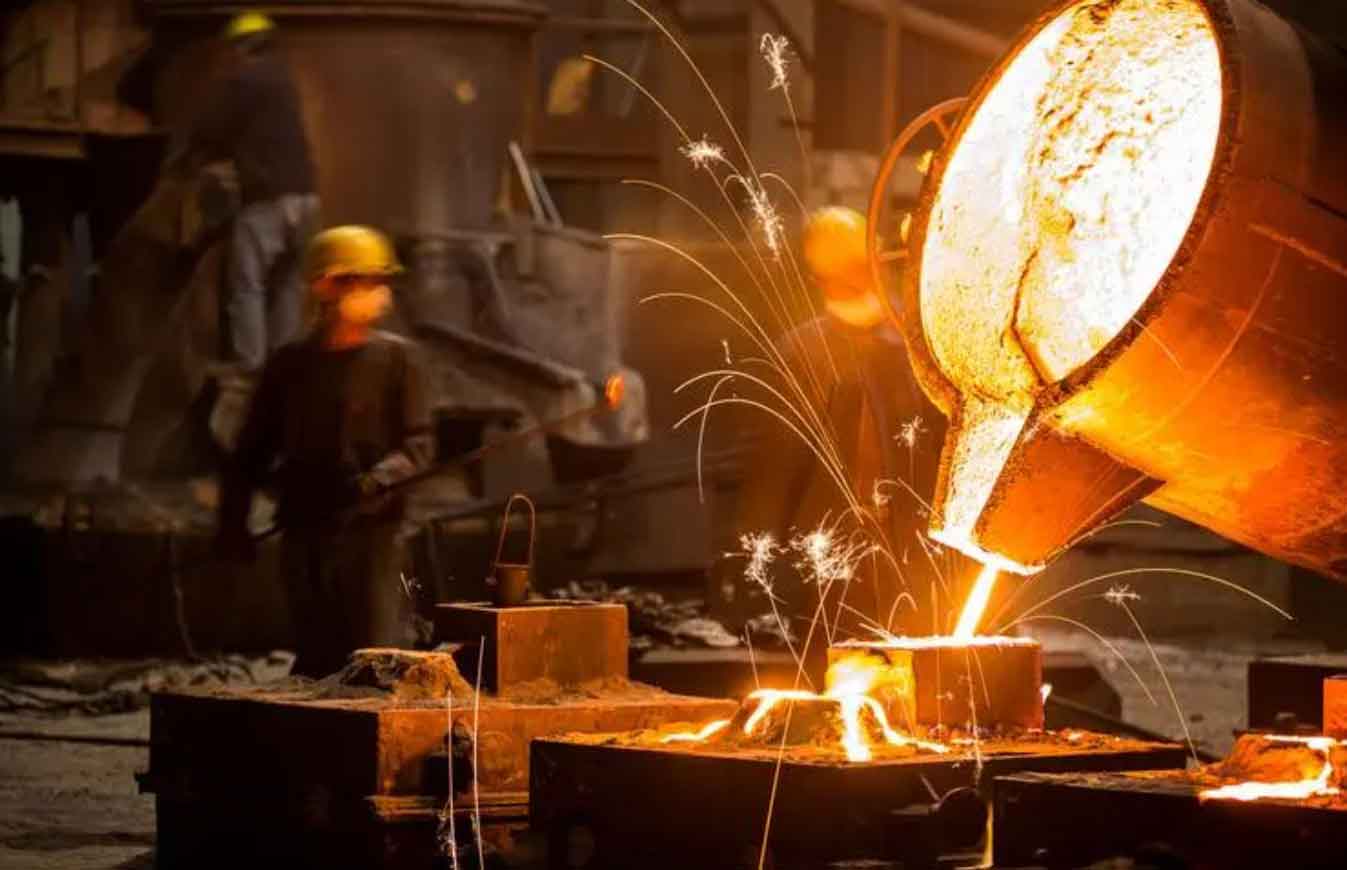Sand casting remains a cornerstone of modern manufacturing, particularly for producing complex metal components. This paper presents an optimized fully automated horizontal parting molding line designed to address common industrial challenges such as unstable sand mold positioning, low equipment recycling rates, and labor-intensive processes. The system integrates advanced mechanical structures and PLC-based control logic to achieve high efficiency and precision.
1. System Architecture and Workflow
The automated production line comprises four functional zones with synchronized conveyor systems:
$$ v = \frac{n \cdot p}{60} $$
Where \( v \) represents conveyor speed (m/s), \( n \) motor RPM, and \( p \) chain pitch. The layout ensures minimum material handling distance between:
- Molding units (2×HMC-450 machines)
- Pouring station with 6-axis robotic system
- Cooling tunnels (25m × 1.2m)
- Shakeout and sand recovery system

2. Key Mechanical Subsystems
The sand casting line incorporates three critical innovations:
2.1 Flask & Weight Transfer Mechanism
This dual-purpose device handles both flask positioning and weight application through pneumatic actuators:
$$ F = P \cdot A \cdot \eta $$
| Parameter | Value |
|---|---|
| Cylinder Bore (mm) | 100 |
| Working Pressure (MPa) | 0.6 |
| Clamping Force (kN) | 4.71 |
2.2 Mold Ejection System
Utilizes servo-controlled pushout force calculation:
$$ F_e = \mu \cdot m \cdot g \cdot k_s $$
Where \( \mu \) = friction coefficient (0.3-0.5), \( m \) = mold mass, \( g \) = gravity, \( k_s \) = safety factor (1.2-1.5).
2.3 Sand Recycling System
Implements multi-stage separation efficiency:
$$ \eta_r = \prod_{i=1}^n \eta_i $$
| Stage | Efficiency |
|---|---|
| Magnetic Separation | 98% |
| Vibratory Screening | 92% |
| Air Classification | 85% |
3. Control System Implementation
The PLC-based control architecture features:
$$ T_{cycle} = \max(t_m, t_p, t_c) $$
Where \( t_m \) = molding time (25s), \( t_p \) = pouring time (18s), \( t_c \) = cooling time (300s). The system achieves 94% synchronization efficiency through:
| Component | Specification |
|---|---|
| PLC | Mitsubishi FX5U-80MT |
| I/O Points | 256 DI/192 DO |
| Network | CC-Link IE Field |
4. Performance Analysis
The automated sand casting line demonstrates significant improvements:
$$ \eta_{prod} = \frac{N_{auto}}{N_{manual}} = \frac{46.4}{28.8} \approx 1.61 $$
| Metric | Manual | Automated |
|---|---|---|
| Workers per Shift | 16 | 2 |
| Floor Space (m²) | 3,360 | 2,618 |
| Daily Output (Units) | 1,680 | 2,720 |
5. Technical Advantages
The sand casting automation solution provides:
- Flask reuse rate > 99.5%
- Positioning accuracy ±0.2mm
- Energy consumption reduction by 34%
- Scrap rate < 0.6%
This horizontal parting molding line represents a significant advancement in sand casting technology, particularly for automotive components like wheel hubs and clutch housings. The integration of modular mechanical designs with adaptive control algorithms ensures reliable production of complex castings while maintaining cost efficiency.
